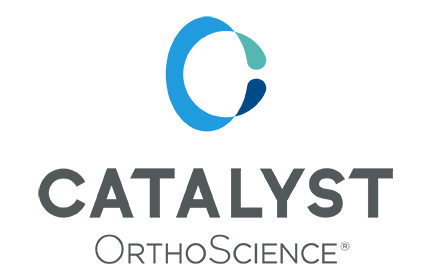Features and Benefits of the Archer™ CSR Total Shoulder System
INNOVATIVE COMPONENTS AND STREAMLINED INSTRUMENTATION LEAD TO PRECISE, ACCURATE, REPRODUCIBLE RESTORATION
A departure from the status quo, the Archer CSR system is uniquely engineered to help patients of all ages. The unique TSA system offers precision and reproducibility in accurate joint line restoration while preserving the patient’s bone and soft tissue.
Innovative, Anatomic Components
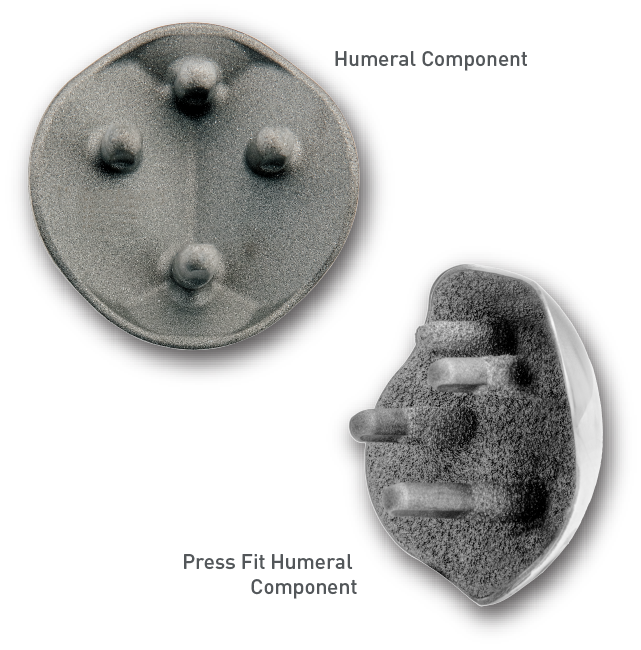
Humeral Components:
- Ellipsoid for replicating anatomy
- Monoblock for ease of implantation
- Multiplanar for load sharing and inherent stability
- Press Fit component now available for speed and convenience
3-Pegged Glenoids:
- Angled pegs allow for oblique approach
- Tapered-bearing rim for inherent stability
- Pegs designed for immediate interference fit fixation
- Augmented Glenoid now available with 10° version correction
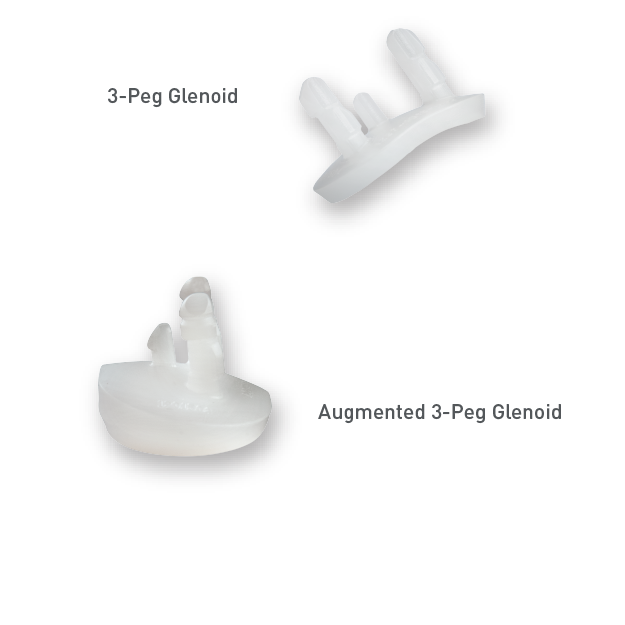
Smart Design, Simple Instrumentation
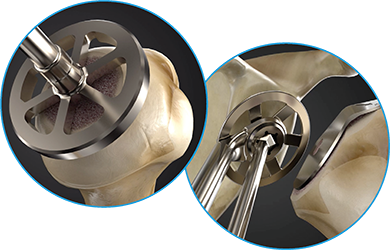
- One simple tray facilitates O.R. instrument management
- Smart design of instrumentation for reliable anatomic restoration
- Angled instruments permit oblique approach, reducing the need for forceful tissue retraction
Bone & Soft Tissue Preservation
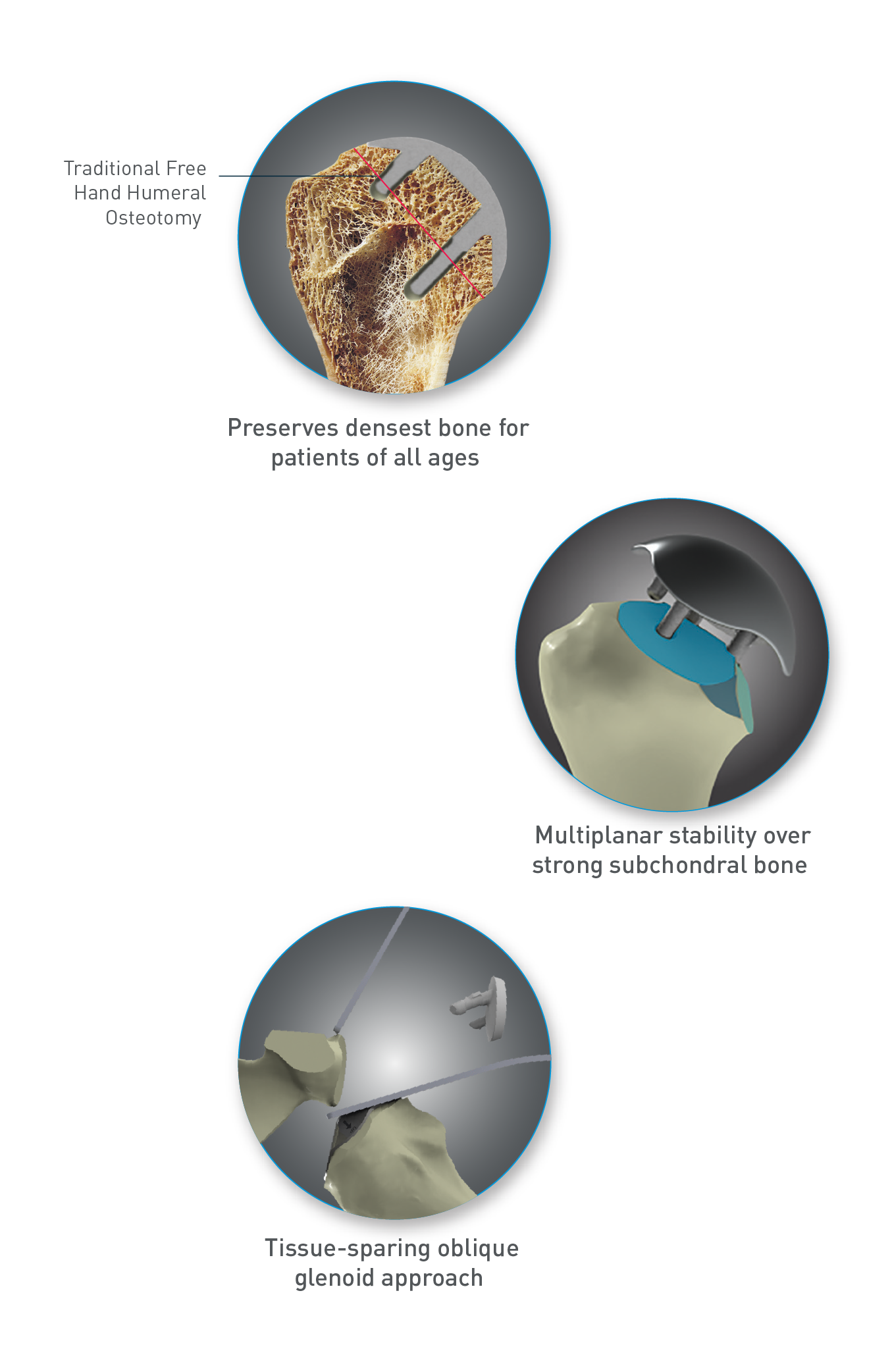
- Humeral component with bone-sparing, multiplanar osteotomy technique allows fixation in inherently strong subchondral bone, avoiding risks associated with both stemmed and stemless TSA devices, such as:
- Cortical bone narrowing, osteopenia and resorption due to stress shielding associated with diaphyseal fixation offered by stemmed devices(1)
- Implant subsidence and “tilt” associated with metaphyseal fixation offered by stemless devices(1)
- Humeral and glenoid implants preserve critical bone stock for possible subsequent future transitions to a reverse shoulder arthroplasty or other stemmed device
- Precision cutting guides and implant design spare capsular & rotator cuff insertion sites against both iatrogenic injury and degenerative changes
- Unique instruments with oblique glenoid approach permit joint access without the large releases and forceful retractions associated with standard TSA systems
Greater Precision in Restoring Native Center of Rotation
Catalyst's Archer CSR system has been shown to more precisely restore proximal humeral anatomy and the anatomic center of rotation (COR) within clinically significant parameters compared to a leading “anatomic” stemmed system.(2)- 2.5-fold reduction in the number of clinically significant outliers (15% vs 40%).(3)
-

- Previous biomechanical studies in both cadaveric and computer models have found that a change in COR of as little as 3.0mm can adversely affect shoulder biomechanics and kinematics.(4-8)
- The Catalyst group demonstrated a significant increase in the precision of restoring the native anatomy. Within the Catalyst group, 18 out of 55 procedures restored the anatomic COR to a change of less than 1.0 mm as compared to only 2 of 55 in the stemmed group
-
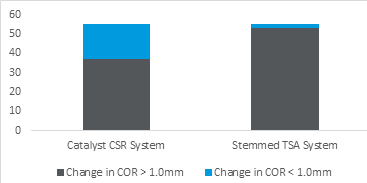
- The average change of the COR was significantly less in the Catalyst group compared to the stemmed group.
References:
- 1. Dr. Luidwig Seebauer’s (from Munich, Germany) talk “Humeral Implants: Standard, Short or Stemless,” presented at the ADVANCED SHOULDER ARTHROPLASTY MEETING in Park City, Utah Jan 10-12, 2019
- 2. Baranek, Eric S., et al. “Accuracy of Humeral Implant Positioning Using a Canal-Sparing Total Shoulder Arthroplasty System.” Journal of Shoulder and Elbow Arthroplasty, Jan. 2019.
- 3. According to previously published biomechanical studies, a change between the anatomic and the postoperative COR of as little as 3.0 mm can adversely affect shoulder biomechanics and kinematics and are defined as clinically significant outliers.
- 4. Williams GR Jr, Wong KL, Pepe MD, et al. The effect of articular malposition after total shoulder arthroplasty on glenohumeral translations, range of motion, and subacromial impingement. J Shoulder Elbow Surg. 2001;10:399–409.
- 5. Nyffeler RW, Sheikh R, Jacob HA, Gerber C. Influence of humeral prosthesis height on biomechanics of glenohumeral abduction: an in vitro study. J Bone Joint Surg Am. 2004;86:575–580.
- 6. Harryman DT, Sidles JA, Harris SL, Lippitt SB, Matsen FA III. The effect of articular conformity and the size of the humeral head component on laxity and motion after glenohumeral arthroplasty. A study in cadavera. J Bone Joint Surg Am. 1995;77:555–563.
- 7. Terrier A, Ramondetti S, Merlini F, Pioletti DD, Farron A. Biomechanical consequences of humeral component malpositioning after anatomical total shoulder arthroplasty.J Shoulder Elbow Surg. 2010;19:1184–1190.
- 8. Favre P, Moor B, Snedeker JG, Gerber C. Influence of component positioning on impingement in conventional total shoulder arthroplasty. Clin Biomech (Bristol, Avon) 2008;23:175–183.

